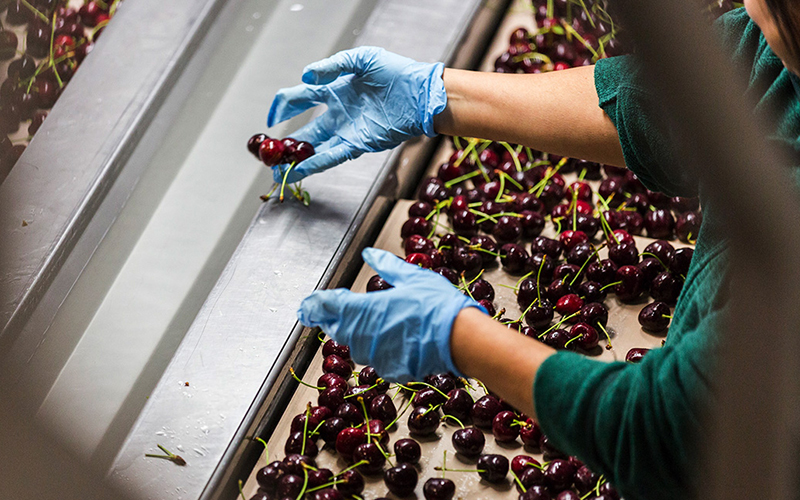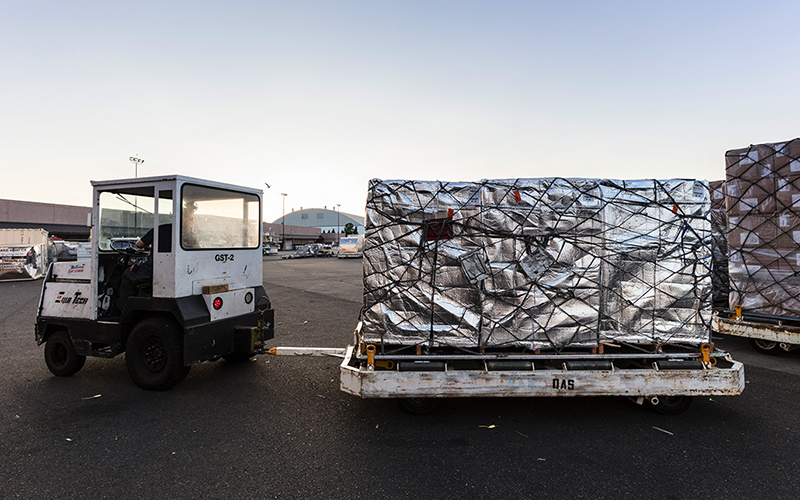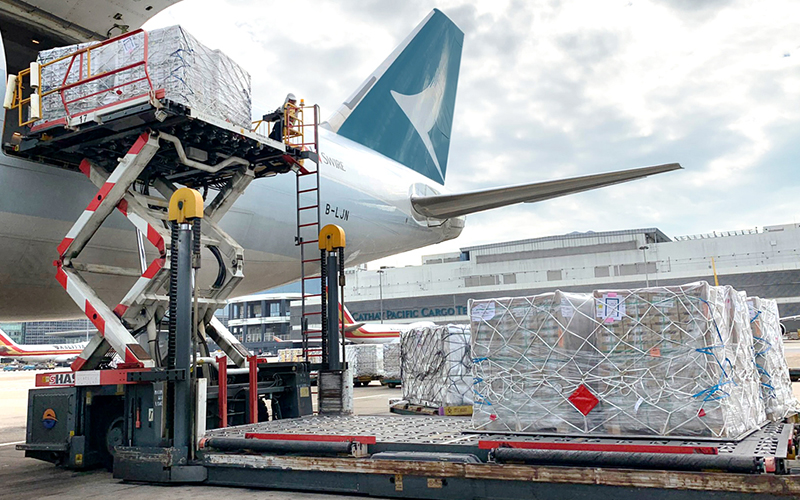Who would be a Pacific Northwest cherry farmer? Cherries are a difficult crop, utterly dependent on the weather’s wheel of fortune. Too much sun or rain, not enough of either, or in the wrong sequence, can all be potentially hazardous for this capricious fruit.
It’s harvest time in the Pacific Northwest at the moment, as it will be through to the end of August. The northern US cherry harvest follows the summer up the coast from California, through Oregon and Washington state, and then over the border into Canada. Ordinarily, the harvest in the Pacific Northwest starts in June, but nothing is ever that ‘normal’.
At a rough average, this region tends to produce around 73 per cent of the US’s total sweet cherry production, and around 75 per cent of that is exported overseas. Given their short shelf life and fragility, getting them to market, and quickly to keep their just-picked condition, relies heavily on air cargo and cool chain discipline. Or as BJ Thurlby, president of Northwest Cherry Growers, a non-profit organisation that markets cherries from Oregon and nearby states, puts it: ‘It takes the world to help move the annual Northwest Cherry crop.’

Each year, Cathay Cargo plays its part, flying large volumes of cherries on Boeing 747-8F freighters from Portland, as well as on cargo and passenger services from Los Angeles, San Francisco and Vancouver to markets across Asia. Its Cathay Fresh solution ensures every shipment stays in the best possible condition while on its journey to market.
The main markets are the Chinese Mainland and various countries across South East Asia. Northwest Cherry Growers has been hosting buyers from Vietnam and Thailand this year to watch the harvest and processing, while other cherry collectives have been trying to stimulate demand from India.
But how much Cathay Cargo actually carries relies on the weather gods. A heat wave in 2021 devastated Oregon’s cherries and they cooked on the trees. Conversely, the cold wet spring in 2022 led to the smallest harvest in more than a decade. A good average yield is around 20 million 20lb (9kg) ‘boxes’ (designed to prevent the weight of the fruit from crushing the cherries at the bottom of each). This year should beat that with a cold spring with one warm week that led to a short accelerated blossom and pollination period.

That means that while yield in terms of numbers of cherries per tree will be down, it is good news – at least for some – producers. Speaking to the Fresh Plaza website earlier this year, Thurlby explained: ‘Usually that translates to really nice fruit. We’re going to end up with trees that have more tonnage because they end up growing bigger cherries.’
Assuming no other meteorological disasters take place mid-harvest, Cathay Cargo anticipates carrying its share of an anticipated 23 million boxes of cherries across the Pacific. ‘We operate four weekly freighters from Portland and have added an additional flight each week to accommodate the cherry harvest,’ says Cathay’s Area Cargo Manager Pacific Northwest US & Western Canada, Eric Kim.
Speed is of the essence for successful shipment, as are low fruit temperatures. Picking is carried out in the morning before the heat of the day sets in. Upon arrival at processing plants, the cherries are plunged into near ice baths to get their core temperature down to 2-3°C. Some larger farms have their own plunge pools, or keep the cherries in reefers within minutes of being picked to arrest the natural spoiling process before truck transfer to processing centres.
Once chilled, the cherries are graded and packed, ready for collection. ‘They are then boxed and wrapped in cool guards or in insulated blankets and foil on pallets before making their way to Cathay Cargo’s outports by truck,’ explains Steve Back, General Manager at Binex Line Corporation, one of Cathay Cargo’s long-time freight forwarder partners during the annual cherry harvest.
On arrival at the airport, the pallets are stored inside until the last possible moment, as Kim explains. ‘We build the freight shortly before the aircraft arrives, because most of the flights arrive late mornings or late evenings when temperatures are high,’ he says. ‘We start the process just hours before the arrival of the aircraft to reduce the time the shipment spends outside.’
With this rush to market to stop the degradation in quality, on-time performance of flights is essential. ‘We understand the importance of quality of service, which is why our customers trust us,’ says Kim. ‘We move shipments as they are booked, and shipments arrive as we promise.’
Upon arrival at Hong Kong International Airport, the cherries are kept cool at the Cathay Cargo Terminal for their trip to the city’s markets or their onward flight to established and developing markets across Asia.

As for this year’s harvest, it’s bumper, with big, juicy fruit. This is great news for consumers, but almost inevitably, it’s not so good for every grower. Cold weather delayed the start of the California harvest, causing an overlap with the Pacific Northwest. This meant some of the travelling farm workers required for this very manual work were in the wrong place at the right time.
Then, because of the glut of large-sized fruit, some small producers with more average-sized cherries struggled to get acceptance for their crops to access export markets – this saw a lower-priced push in the domestic market. For some, those yields did not justify the cost of harvesting at all. But as every farmer knows, there is always next year.
‘Growers have to be hopeful,’ says Northwest Cherry Growers’ Thurlby. ‘They wouldn’t be in this business if they didn’t have a sort of riverboat gambler soul.’








